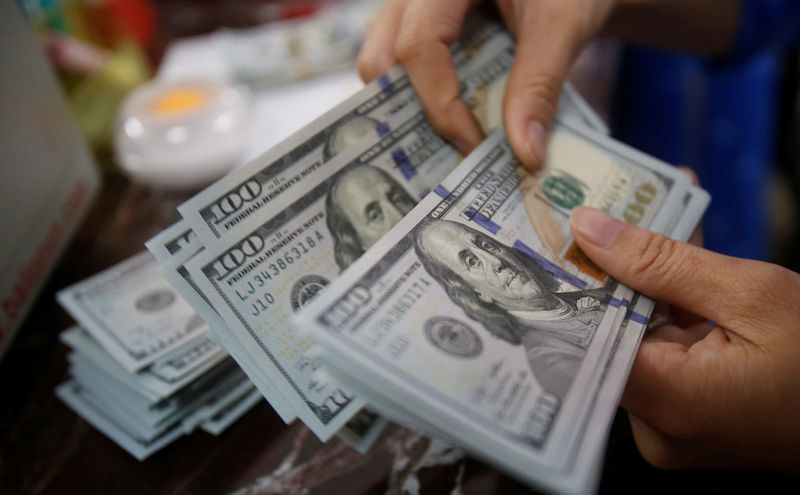By David Henry
NEW YORK (Reuters) - It seemed like an opportunity a lender would not want to miss.
The loan paid 10.25 percent interest which would go up if a benchmark rose. The borrower was Trident USA Health Services, a growing company which provided bedside medical testing in nursing and assisted living centers.
Trident was buying similar companies across the country targeting cost savings from consolidation. Trident filed for bankruptcy last month. It had taken on too much debt to cope with reduced Medicare and Medicaid payments, equipment upgrades and other issues. A new billing system for the expanded company failed and it never collected millions of dollars. Trident's lenders face estimated losses of 50 to 100 percent. "We were wrong," Michael Mauer, chief executive of CM Finance Inc, (O:CMFN) one of the lenders, said in a Feb. 7 call with stock analysts.
After the Great Recession, regulators squeezed much of the risk out of U.S. banks. But risk has not gone away. Much of it now resides in non-bank financial entities, including commercial loan companies, such as CM Finance, private credit funds, and structured finance vehicles, many of which have yet to be tested by a broad recession after a nearly decade-long expansion.
The borrowers include mid-sized, speculative-grade companies that have loaded up on debt to fund their expansion. Sometimes one setback can push them over the edge, as happened with Trident's botched billing system roll out.
“We think credit losses will rise,” said Matt Carroll, a credit analyst at S&P Global (NYSE:SPGI) Ratings. His reasons: A lot of money has flowed into private credit, pushing down lending standards in a benign economy.
Some $900 billion in non-bank loans to mid-sized companies sit alongside another $1.1 trillion of speculative-grade loans that have been made by bank syndicates to larger companies and mostly resold to institutional investors. These amounts are dwarfed by the $11 trillion in outstanding U.S. home mortgage loans and probably are not enough to drag down the financial system, as mortgages did during the 2007-2009 crisis.
However, rising non-bank debt has fueled concerns it could make a recession worse because loan losses could cripple many non-bank lenders, leaving companies most in need without access to credit. "When you have a real recession, the lender will not be there. So, a lot of these borrowers will be stranded," JPMorgan Chase & Co (NYSE:JPM) chief Jamie Dimon told analysts in January.
SPECIAL STATUS
The publicly listed funds that lent to Trident are among several dozen known as business development companies. BDCassets have quadrupled since the crisis to $100 billion, according to data from Wells Fargo (NYSE:WFC) analysts. (Graphic: https://tmsnrt.rs/2V2ZCSl) Those funds attracted investors by offering yields topping 10 percent because they were making loans that were riskier than those banks were allowed to make.
BDCs hold special status under a 1980s federal law designed to support small business. The law limits their leverage. They are allowed to bypass taxes by paying out 90 percent of profits to shareholders. Unlike most non-bank lenders, business development corporations must disclose estimated values for each loan and say which ones are going bad. Their reports give analysts looking for signs of trouble in commercial lending a glimpse into a bigger pool of an estimated additional $800 billion in unlisted funds and private accounts managed by many of the same firms.
"You can learn a lot by looking at the BDCs for what they might mean for other private credit," said Carroll of S&P Global Ratings.
In 2013, for example, one such investor called THL Credit Inc (O:TCRD) made loans, starting at 9 percent, for Charming Charlie, a retailer of women's fashion accessories arranged by color in as many as 26 different hues. The founder used the loans to buy shares of the business from a private equity firm and add more stores, according to S&P Global. But the company went too far in stocking the stores with items of different colors and got stuck with unsold merchandise. Constrained by its debt, the company ran short of cash to properly stock the stores and filed for bankruptcy in December 2017. THL declined to comment for this story, but in a March 7 call its executives told investors they have diversified their portfolio to include 42 companies and reduce the risk of losses like those on Charming Charlie.
These days some BDCs are doing better than others. Six of 39 BDCs tracked by Keefe, Bruyette & Woods recently traded at premiums of more than 10 percent to net asset value, a sign of good lending records. Eight, however, traded for less than 75 cents for each dollar of net asset value - suggesting they had enough problems with loans to make investors doubt the values shown will hold up.
As BDCs doubled in size since 2013, Refinitiv data shows levels of debt relative to profits have risen to 4.75 times from 4.2 times for mid-sized companies that borrowed to finance buyouts, according to Refinitiv data. That, combined with some lenders willingness to dial up the risk to boost returns, could spell more trouble ahead.
"It has become harder for BDCs to deliver compelling returns without taking more risk," Finian O'Shea, a BDC analyst at Wells Fargo, said.
CM Finance, for example, in the last half of 2018 acquired loans coming due within two years and issued by low-rated Techniplas, a supplier of highly engineered plastic parts to the auto industry. The appeal of the loans? A 14 percent yield. Yet, last month Standard & Poor’s put a negative outlook on the loans because of the risk that company will not be able to refinance them in time.
